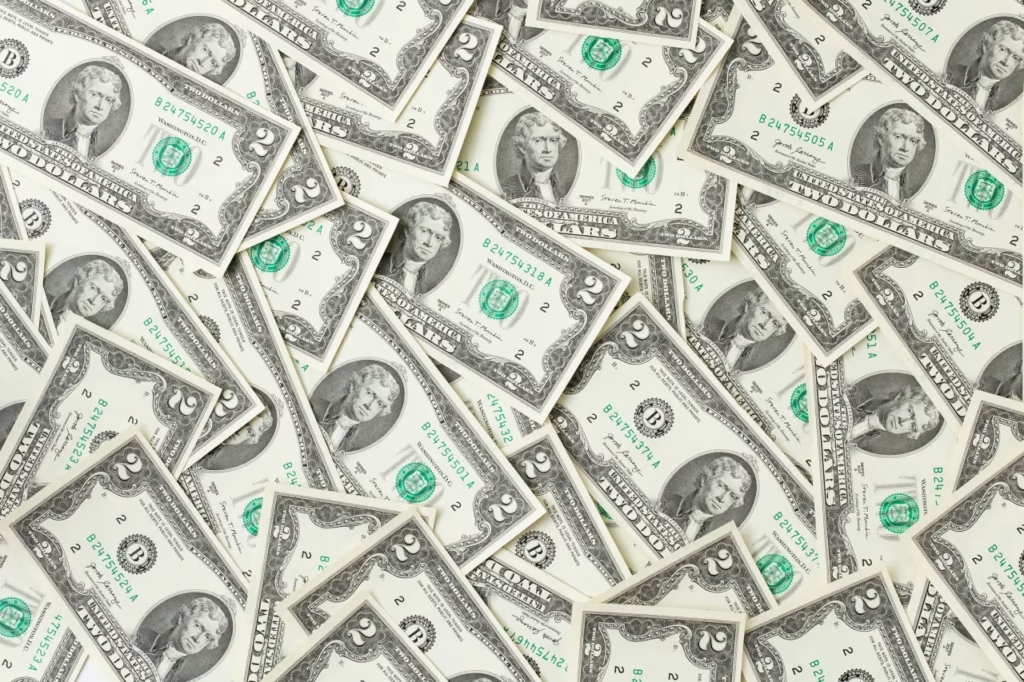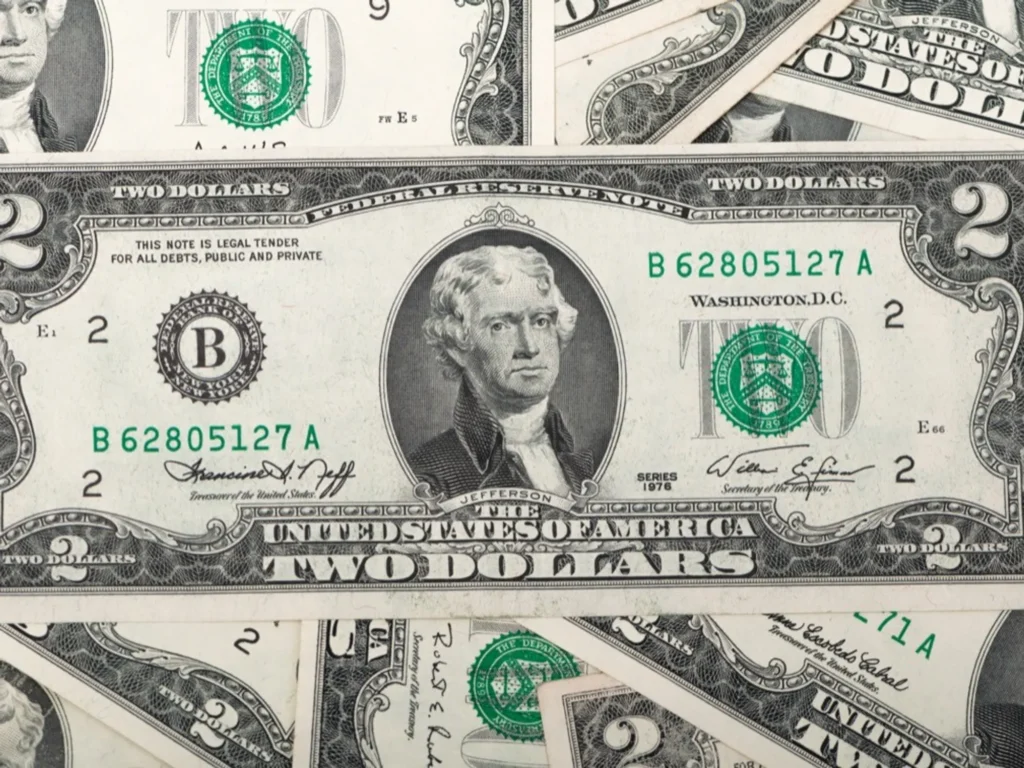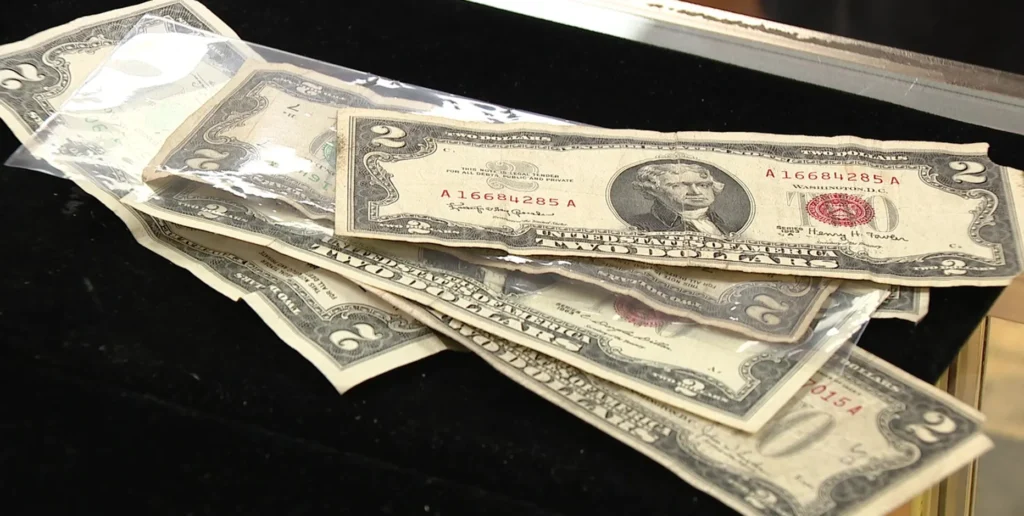For decades, the humble $2 bill has floated under the radar—often dismissed as a novelty or tucked away for good luck. But recent interest from collectors has turned certain $2 bills into prized possessions, with some fetching up to $20,000 at auctions. The good news? You might already have one of these valuable notes sitting in your wallet, drawer, or an old shoebox.
Here’s what to look for if you’re hoping to cash in on a small fortune.
Why $2 Bills Are Rare—But Not All Valuable?
Although $2 bills are still in production today by the Bureau of Engraving and Printing (moneyfactory.gov), they make up only a small fraction of total U.S. currency in circulation. Because they’re not used as frequently, many people assume they’re no longer printed—making them a curiosity.
But rarity alone doesn’t determine value. Condition, age, unique serial numbers, and errors all play a role.
1. Look at the Serial Number
One of the fastest ways to identify a valuable $2 bill is by checking its serial number. These eight-digit codes, located on the front of the bill, can offer big clues:
- Low Serial Numbers: Notes with numbers starting with “00000001” are extremely rare. A 1976 series bill with serial number 1 reportedly sold for $20,000.
- Solid Serial Numbers: Notes where all digits are the same (e.g., 88888888) are collector favorites.
- Ladder Numbers: Bills with sequential serials like 12345678 or 87654321 are also highly sought after.
- Star Notes: If the serial number ends with a * (star symbol), it’s a replacement note—produced to replace misprinted bills—and generally much rarer.
For more on serial number types, you can refer to U.S. Currency Serial Number Types.
2. Check the Year and Seal Color

Most $2 bills in circulation today are from the 1976 series, printed in celebration of the U.S. Bicentennial. While these are somewhat collectible, older series can be far more valuable.
- 1928 Red Seal Notes: These were the first $2 bills to feature Thomas Jefferson’s Monticello and can be worth hundreds or even thousands depending on condition.
- Bills from 1890–1917: Early issues like the 1890 Treasury or “Educational” series can fetch over $4,500 at auction.
Red and brown seal colors are typically found on older notes. The standard green seal we see today wasn’t used on $2 bills until later years. For seal history, visit U.S. Department of the Treasury.
3. Spotting Printing Errors
Errors make currency stand out—and collectors pay top dollar for these anomalies.
- Misaligned Prints: A note where the front and back don’t line up correctly.
- Double Prints: A design or serial number printed twice.
- Ink Smears or Gaps: These manufacturing mistakes are rare and instantly boost value.
Although not every error increases a bill’s value, some have sold for thousands depending on their uniqueness and appeal.
4. Consider the Bill’s Condition

Condition is king when it comes to currency collecting. A crisp, uncirculated bill—one that shows no signs of wear or handling—will always be worth more than a heavily used one.
Bills are graded using a scale from “Poor” to “Gem Uncirculated.” If you suspect you have a rare or high-quality note, it may be worth getting it graded by a third-party service like Paper Money Guaranty (PMG) (pmgnotes.com).
Where To Get Your $2 Bill Appraised
If you think you’ve got a winner, don’t rely solely on online forums or quick price checks. Consider:
- Visiting a certified coin and currency dealer.
- Submitting your bill for grading through services like PMG or PCGS.
- Exploring auction houses such as Heritage Auctions (ha.com) or Stack’s Bowers (stacksbowers.com).
For general guidance, the American Numismatic Association (ANA) (money.org) is also a helpful resource.
Are New $2 Bills Valuable?
While the U.S. Treasury still prints $2 bills (last confirmed in 2022), they’re unlikely to hold immediate value above face unless they have special serial numbers or errors. But holding onto a few clean, low-serial modern notes might still be a smart long-term move.
You can confirm current currency issuance with the Federal Reserve (federalreserve.gov).
Final Thoughts

The $2 bill is more than just a quirky piece of pocket change—it could be a hidden treasure. Whether you’re a casual holder or a passionate collector, a quick inspection of your bills might reveal something extraordinary.
As always, if you’re unsure, seek a professional appraisal. That little $2 note could be worth a lot more than you think.

Vikas is a seasoned finance writer with a keen eye for unraveling complex global financial systems. From government benefits to energy rebates and recruitment trends, he empowers readers with actionable insights and clarity. When he’s not crafting impactful articles, you can find him sharing her expertise on Social Media. You can connect with him via email at [email protected].









